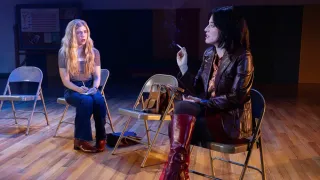August 22, 2023
Free Disney World Passes is Latest Front in War Between Disney and DeSantis Appointees
Mike Schneider READ TIME: 2 MIN.
Already involved in two lawsuits with Disney, Gov. Ron DeSantis' appointees to a board that oversees Disney World's governing district on Monday launched a battle against the company on a new front – free passes and discounts for district employees.
Board members of the Central Florida Tourism Oversight District submitted a complaint to the state Inspector General, claiming that the millions of dollars in season passes, as well as discounts on hotels, merchandise, food and beverages, that their Disney-supporting predecessors provided governing district employees amount to unethical benefits and perks.
Last year alone, before the DeSantis appointees took over the governing board and it was still controlled by Disney backers, around $2.5 million in discounts and passes were given to district employees and their families, the board said in a news release.
The arrangement was self-serving to the company because it funneled money back to Disney, with the district footing the bill, the release said.
Disney didn't respond to an email seeking comment. A spokesman for the board didn't respond to a request for the letter sent to the Inspector General, which investigates fraud, mismanagement, waste and abuse.
The arrangement appears to be more like an employee benefit rather than a taxpayer scam, similar to the way professors at a university may get free passes to athletic events or free tuition for family members, said Richard Foglesong, a Rollins College professor emeritus who wrote a definitive account of Disney World's governance in his book "Married to the Mouse: Walt Disney World and Orlando."
The complaint from the DeSantis appointees comes as the district administrator they appointed last May faces an ethics dilemma of his own. Glen Gilzean, who earns $400,000 annually in his new job, also is chair of the Florida Commission on Ethics. He can't simultaneously be a commission board member and work for the district because the commission prohibits public employees from serving on its board, a commission attorney said last week in a legal opinion.
A fight between DeSantis and Disney began last year after the company, facing significant pressure internally and externally, publicly opposed a state law banning classroom lessons on sexual orientation and gender identity in early grades.
As punishment, DeSantis took over the district through legislation passed by the Republican-controlled Florida Legislature and appointed a new board of supervisors to oversee municipal services for the sprawling theme parks and hotels. But the new supervisors' authority over design and construction has been limited by the company's agreements with Disney-supporting predecessors, which were signed before the new board took over.
In response, Florida lawmakers passed legislation that repealed those agreements.
Disney has sued DeSantis in federal court, claiming the governor violated the company's free speech rights. The district has sued Disney in state court, seeking to nullify the agreements.






